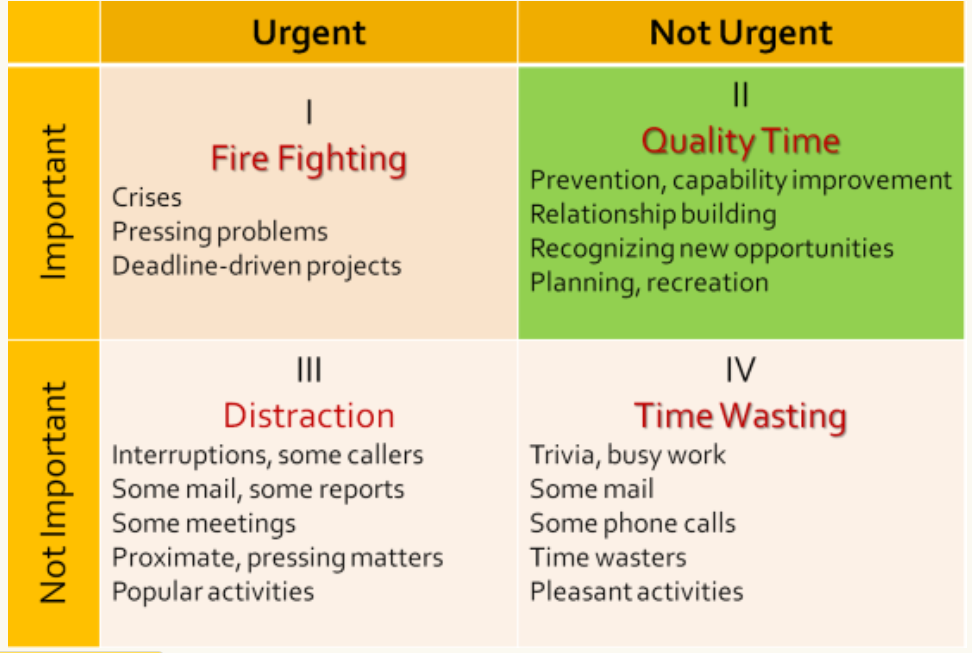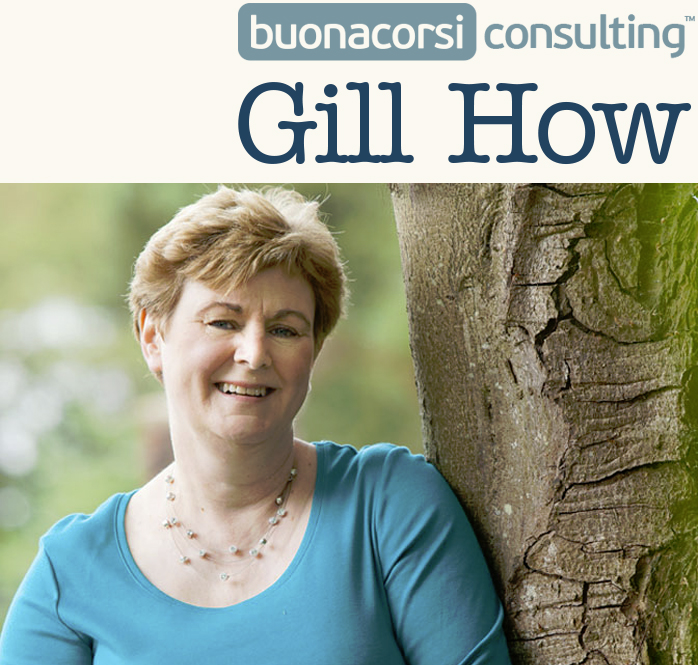
Be honest. Give yourself a score out of 10. Are you making the progress you wish for with the hopes, aspirations and goals which are the most important to you?
For many of us, our score is not as high as we would like it to be.

What gets in the way?
It can be many things:
- Not taking the time out to reflect on what these things actually are (they are always unique and personal to you)
- Putting them off, delaying them because they are not urgent, or don’t have a timescale
- Prioritising other things – maybe doing things for other people first before yourself.
Some people find the Eisenhower Matrix helpful, as a way to think about and see priorities. This is called the Stephen Covey Time Management matrix too:

As you can see, there are four quadrants. The axes here are key – one dimension is importance – to you – and the other is urgency.
To make good progress with the things that are important to you, you need to be focussing on spending quality time in Quadrant 2.
However, many of us are in Quadrant 1 – important, but there is a deadline or urgency too.
Take look at the activities in the Quadrant 2 matrix again. They can seem quite confusing, not very active or task focussed. They can seem low on energy, maybe even a little bit dull or boring!
Unlike Quadrant 1, there is no deadline or sense of urgency.
But think about it:
- Without personal development and learning, we need to reinvent the wheel every time
- Without investing in relationship building, there is no-one to help us with a new goal or to discover new opportunities attractive to us
- Without protecting our health, life can be so much more difficult
- Without genuine relaxation and recreation, we are much more likely to slip into time wasting Quadrant 4, for example, endless scrolling with social media.
- Without long term planning and preparation, we cannot really make steps towards the future we desire.
We can get clever about combining these things too. The photo at the top of the blog – of the trainers – these are from Gareth, a participant in a current leadership programme. His Quadrant 2 activity is going to the gym with his teenage son – getting fit for cricket and family time!
Here’s another example. Tom, on the same leadership programme, sees guitar practice as capability development and relaxation; i.e. both Quadrant 2 activities. Watch him in the video with his band!
What can you do if you want to spend more time in Quadrant 2, so that you can equip yourself to pursue the things that are really important to you?
My top tip is to create a fake deadline.
You can create a fake deadline by:
- making a commitment to someone else, for example, saying that you will email a document by the end of the day
- publishing a goal to others, for example, raising money for a charity by a sponsored walk
- paying for something up front so the investment is made, for example, an exercise class – see my efforts in the video below!
How keen are you on creating a future that you desire? In your personal life? In your professional life?
Could the approach of Quadrant 2 make a significant difference to outcomes for you?
Gill How is an internationally recognised speaker with her keynote “Switch On Your Strengths”, and a Leadership Developer designing and delivering programmes globally to enable senior managers, executives and professionals step into their strategic leadership capability. If you would welcome an exploratory conversation to go further with your Quadrant 2, get in touch:
P.S. If you want to learn more about Quadrants 1, 3 and 4 as well, take a look at the videos below ⬇




